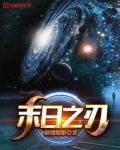Chapter 633 Small Problem
The prototype was still spewing terrible plasma.
During this period, Carl's team successively tested the power generation system's extreme operation, low-power operation, engine power regulation, and power regulation of the power generation system.
When Carl's team designed it, the initial design was a Levis ring and a spiral magnetic field device.
However, during the simulation test, they found that a Levis ring is not only huge in size and weight, but once it fails, it means that the spacecraft will lose power.
In order to solve these problems, they discussed more than a hundred solutions and tested them trillions of times on supercomputer simulations.
Finally, this system was designed.
The six Levis rings are not only convenient for maintenance, but even if five of them are broken, as long as one can work, the spacecraft will not lose power.
In addition, the parts of the Levis ring device are universal. In case of an emergency, you can find some usable parts from the faulty Levis ring. Maybe two damaged Levis rings can be pieced together to make a good one.
The testing of the power generation system composed of Levi's rings went very smoothly.
However, some problems occurred while testing the nitrogen-rich plasma project in the open spiral magnetic field device .
The reason is that nitrogen is not easy to ionize.
"It seems that the plasma engine needs to be adjusted." Carl thought while biting the capacitive pen.
Mikoyan reminded: "I heard that there is a laboratory on Venus that has developed a highly efficient ionizing electric field. You can contact them."
"Oh? Then you can learn from it."
In fact, the engine studied by Carl's team is prepared for the next generation of spacecraft, so the working fluid of this engine must not be fixed to one or two elements.
For example, many Hall engines can only choose xenon as a working fluid for the sake of efficiency. However, the content of xenon in the universe is not high, and it is very troublesome to enrich and refine it.
Carl hopes to integrate a plasma engine whose working fluid can use elements 1 to 26 including iron.
In this way, the working fluid needed for the engine does not need to be searched for specifically. When encountering asteroids and planets, it can be quickly obtained on the spot.
A generation spacecraft cannot be too picky, otherwise it will not be able to sustain a long flight of several decades.
Using this prototype as the power standard, it would only take about 150 years to fly from Earth to the six-clawed giant star.
It only takes about 200 years to reach the Proxima system.
At present, the maximum lifespan of new humans is about 150 to 170 years. By using absolute zero degree freezing technology, their lifespan can be extended by hundreds of years.
In this way, Sapiens could completely colonize Proxima Centauri.
However, the company's management currently has no relevant plans.
Instead of building generations of spaceships to travel across planetary systems, it is better to continue farming in the solar system and try to break through the technology of light speed travel.
In Li Qingye's opinion, it would be difficult for a first-level civilization without light-speed travel technology to colonize other planetary systems unless the distance between the two sides is within one light year.
However, the solar system is in the Orion spiral arm, not in the core region of the Milky Way. The distances between planetary systems here start at several light years, and it is rare for two planetary systems to be within one light year of each other.
Given the distance of several light years and the lack of light-speed travel technology, sending generations of spacecraft to carry out interstellar colonization is too cost-effective and there is also the risk of loss of control and separation.
After all, one or two generations is nothing, but once it exceeds five generations, the human forces between the two planetary systems will inevitably become alienated.
Instead of sending generations of spaceships, it is better to launch the spark of civilization.
Of course, Generation Spaceship Technology will certainly continue to invest in research. After all, this is one of the ways out for mankind.
If something goes wrong with the solar system one day, or if we encounter a powerful first-level civilization, at least the company can still escape.
When it comes to preparing for a rainy day, Sapiens never lets up.
Of course, the engine studied by Carl’s team will also greatly improve transportation within the solar system.
Seeing that there were no major problems with the test, Mikoyan asked Karl's team to continue their efforts, while he went to inspect another project.
After 17 hours of trial operation.
Suddenly an alert popped up on the test system.
[Local degradation of the neutron absorbing layer was detected…].
Karl frowned: "Continue testing."
Then he and several colleagues checked the degradation of the neutron absorber.
A researcher said helplessly: "The degradation rate is much faster than the predicted model. If it continues to deteriorate at this rate, it is estimated that the entire neutron absorption layer can only last 30 to 40 days before it must be replaced with a new one."
"What do you think?" Carl turned and asked others.
Huang Xiaoyu, a researcher in plasma fluid dynamics, looked through the data carefully and saw that the degradation was not comprehensive, but localized in small spots, which indicated that the neutron flow was extremely irregular.
He input some of the data again, substituted it into the plasma operation model, and quickly analyzed an unexpected cause.
Huang Xiaoyu was incredulous: "The moon's gravity? It's the moon's gravity?"
"Gravity?" Carl was also very surprised.
In the simulation analysis of the model, the nuclear fusion defense process within the confinement of the magnetic field can be clearly seen The high-energy neutrons ejected from the fusion process become chaotic due to the interference of the moon's gravity.
This disorder is very troublesome because it can lead to uneven local distribution of high-energy neutrons, causing a portion of the neutron absorption layer to deteriorate rapidly.
"What should we do?"
"We don't have efficient gravity regulation technology at the moment, unless we go to outer space to test it."
"There is actually no way to completely avoid the interference of gravity in outer space."
A group of researchers fell into deep thought.
There are actually only two paths before them now.
One is to use thicker lithium-carbon nanolayers.
The other is to adjust the magnetic field to make the nuclear reaction more uniform, thereby making the ejected neutrons more evenly distributed.
Increasing the thickness of the lithium-carbon nanolayer may seem like nothing, but it is actually very troublesome.
Because when Carl's team designed this plan, they took into account the amount of lithium-carbon produced during the nuclear fusion reaction and the service life of the lithium-carbon nanolayer.
About 70 days is an optimal value. During the nuclear fusion reaction, the newly generated lithium-carbon elements are just enough to make up for the elements in the lithium-carbon nanolayer.
It’s not that the lithium-carbon elements in the lithium-carbon nanolayers disappeared, but that a large part of these elements were converted into radioactive isotopes.
Radioactive isotope lithium carbon cannot be used as neutron absorption layer material.
Therefore, the best solution now is to adjust the confining magnetic field and the accelerating tail field so that the nuclear fusion reaction can be more uniform. This is the fundamental solution.
Otherwise, when it comes to interplanetary travel, this problem will be rapidly magnified due to the resource-scarce environment.
It is just that the adjustment of the magnetic field confinement model and the tail field acceleration model needs to be adapted to local conditions, because there are slight differences in gravity at each point in the universe.






